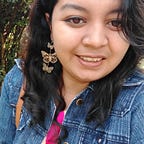So I read Attoseconds!
Creativity is seeing what everyone else sees, but then thinking a new thought that has never been thought before and expressing it somehow.
-Neil deGrasse Tyson
Welcome to Phiwhyyy?!? Today, we’ll dive into the fascinating world of attoseconds. It fascinates me how mathematics deals with numbers, and some of those numbers are inconceivable. Attoseconds, defined as one quintillionth of a second, may seem like a tiny unit of time, but they play a significant role in various fields of science and technology. In ultrafast optics and spectroscopy, attosecond pulses are generated to study matter dynamics at an atomic and molecular level. These pulses are so short that they allow scientists to capture ultrafast processes within the femtosecond (time: one quadrillionth of a second) regime. Studying attoseconds has revolutionized our understanding of fundamental processes in physics, chemistry, and biology.
The word atto comes from the Danish word “atten,” which means eighteen, representing the 18th power of 10. Attoseconds have become essential in unravelling the mysteries of quantum mechanics (Gaarde & Schafer, 2013). Scientists can now generate attosecond pulses by controlling and manipulating the electric field of light (Lévesque & Corkum, 2006). These pulses, lasting only a few quintillionths of a second, provide unprecedented detail and precision in studying the behaviour of atoms and molecules, allowing us to observe previously hidden dynamics and phenomena (Krausz & Ivanov, 2009).
Our recent Noble Prize winners, such as Donna Strickland and Gérard Mourou, were awarded for their groundbreaking work in attosecond physics.
A little history:
Attoseconds were first introduced in 2001 when attosecond pulses were successfully generated. Since then, researchers have made significant advancements in attosecond science, pushing the limits of what can be observed and understood on such a minuscule timescale. Attosecond optics, a branch of physics that generates and characterises attosecond pulses, has made remarkable progress over the years. With the advancement of attosecond technology, scientists have been able to probe and manipulate electron dynamics in real-time. This has opened up possibilities in ultrafast spectroscopy, high-energy physics, and even quantum computing. In quantum computing, attoseconds are essential for precisely controlling and measuring qubits. Attoseconds are also crucial in the fields of communication and information technology.
Why do we read attoseconds?
Attoseconds have become essential to scientific research and technology because they allow us to quickly observe and manipulate matter. This has enabled breakthroughs in understanding fundamental physical and chemical processes, such as electron dynamics, ionization, and molecular reactions. Furthermore, attosecond pulses have applications in fields such as ultrafast spectroscopy, where they provide unprecedented time resolution for tracking chemical reactions and studying molecules.
The Nobel Buzz:
The recent Nobel Prize in Physics awarded to Donna Strickland and Gérard Mourou for their work on generating high-intensity, ultra-short laser pulses significantly recognized the importance of attosecond science (Jiang et al., 2017). Their work revolutionized the field by enabling the generation of attosecond pulses to generate new possibilities for studying and controlling ultrafast phenomena at the smallest timescales. These attosecond pulses have paved the way for advancements in various fields, including materials science, quantum physics, and biomedicine. In materials science, attosecond pulses have allowed scientists to study the dynamics of electrons and atoms in materials, providing insights into their properties and behaviour. Additionally, attosecond pulses have played a crucial role in advancing our understanding of quantum phenomena and enabling the development of quantum technologies.
You might be shocked that attoseconds can also be used in coding and data transfer. With the increasing need for faster and more efficient data transfer, researchers have begun exploring the potential of using attosecond pulses in coding and communication systems. Encoding information in the precise timing and phase of attosecond pulses makes achieving incredibly high data transfer rates possible. These ultrafast pulses can carry vast amounts of information in a fraction of the time, allowing faster and more efficient communication.
How do attoseconds help in coding?
Attoseconds have the potential to revolutionize coding and data transfer systems by enabling ultrafast communication and higher data transfer rates. Using attosecond pulses in coding involves encoding information in the precise timing and phase of these ultrafast pulses. This encoding technique allows for transmitting large amounts of information in extremely short time intervals. By utilizing attosecond pulses, data can be transmitted and decoded at unprecedented speeds, leading to faster and more efficient communication systems. Furthermore, attosecond pulses can also enhance the security of coding systems.
Did you know?
A Swiss physicist, Ursula Keller has significantly contributed to ultrafast laser technology and attosecond science. Her work on mode-locked lasers and femtosecond pulse generation has paved the way for developing attosecond pulses and their applications. Overall, attosecond science has revolutionized various fields and opened up new possibilities for studying ultrafast phenomena. In the ever-expanding world of technology and communication, using attosecond pulses holds immense potential for data transfer and coding systems.
That’s it for today! This had been a very impromptu blog, but I enjoyed it as a whole! I believe you did the same! See you in the next post Bye!!
